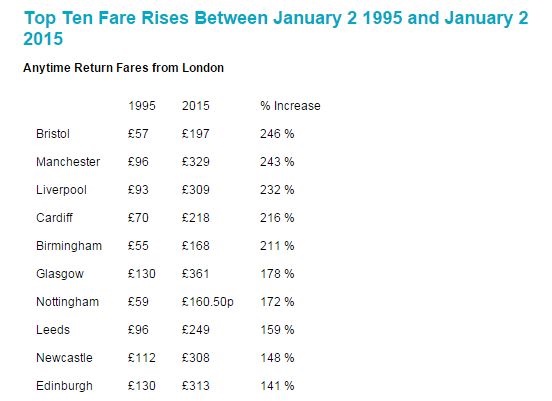28.01.15
Controversial rail fare data
Data on rail fares is, and always will be, controversial – no matter who produces it. And today is no different.
New ‘independent’ research, carried out on behalf of the union TSSA, reveals that walk-on rail fares have more than trebled on some of the busiest routes since privatisation.
Conducted by fares expert Barry Doe, the research revealed that the biggest hike has been on First Great Western where a peak walk on return fare from London to Bristol has increased by 246% since January 1995.
According to the union, the cost to passengers since rail was privatised shows increases of between 141% and 246% on the 10 most popular routes.

But a spokesman for the Rail Delivery Group, which represents Network Rail and train operators, said: “The TSSA’s figures are misleading in the extreme because they deliberately focus only on the most expensive fares.
“On average, the cost of rail travel has increased by 6% in real terms over the last 15 years. Passenger numbers have almost doubled over the same period, contributing to a fivefold increase in money going back to government to reinvest in a better railway.”
In defence of the figures, Manuel Cortes, general secretary of TSSA, said: “Passengers have paid a terrible price for this political folly. The private rail industry has taken all the gain while passengers have suffered all the pain.
“When the Tories sold off the railways, they gave the likes of tax exiles such as Sir Richard Branson, a licence to print money at the passenger’s expense.”
The union is now asking Labour to give passengers a break by introducing a one year fares freeze from next January if the party wins May’s General Election.
Whichever way you look at it this type of research on fares, once again, highlights how controversial and political the topic can become.
What might help you make a decision on whether people are getting value for money, however, is the results of the National Rail Passenger Survey. Published recently, the report revealed that passenger satisfaction with the railway’s in terms of value for money was at 46%, up from 45% in the previous autumn. But that still means more than half of us don’t feel we are getting value for money.
Tell us what you think – have your say below, or email us directly at [email protected]